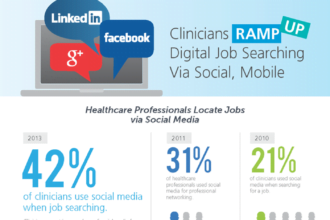 Most of the commentators on the exchange roll out caution against the “death spiral,” in which failing to attract the young and healthy raises overall premiums. This further deters low-cost people from enrolling, resulting in even higher premiums.
Most of the commentators on the exchange roll out caution against the “death spiral,” in which failing to attract the young and healthy raises overall premiums. This further deters low-cost people from enrolling, resulting in even higher premiums.
 Most of the commentators on the exchange roll out caution against the “death spiral,” in which failing to attract the young and healthy raises overall premiums. This further deters low-cost people from enrolling, resulting in even higher premiums.
Most of the commentators on the exchange roll out caution against the “death spiral,” in which failing to attract the young and healthy raises overall premiums. This further deters low-cost people from enrolling, resulting in even higher premiums.
This is absolutely true in a normal market. But a new report from the actuarial consulting firm Milliman shows how the Affordable Care Act has turned normal market principles on their head.
Here is the problem. Because health insurers are no longer allowed to ask any questions about an applicant’s health, they have absolutely no way of knowing who they are enrolling in terms of past or present illnesses or health conditions. They might attract a group of pretty healthy people or a group of pretty sick people, but they won’t know until people start filing claims. So it is impossible to accurately set premiums, at least for the first few years.
Another problem is that some insurers may attract a whole lot of very sick people while others attract mostly healthy people. In a particular state BlueCross may be known as the best place to go if you have cancer or heart disease, while Aetna may be famous for its discounts on gym memberships. The healthy people will be drawn to Aetna while the really sick people prefer the Blues. If companies could set premiums to accurately reflect their enrolled population, BlueCross premiums would be outrageously expensive while the Aetna premiums would be cheap.
ObamaCare tries to fix these problems in several ways. It incorporates a “reinsurance” program to reimburse companies for some of the costs of very high claims. John Graham has written about this here. This is a temporary program that phases out once participating insurance companies have a better handle on whom they are enrolling.
It also includes what it calls a “risk corridor” program, so that if some companies get hit with a surge of bad risks, they are assured of being compensated for their extraordinary expenses. This, too, is a temporary program. It is supposed to be paid for by an assessment on all insurance companies, but it is currently looking like the entire ObamaCare market is made up of bad risks, so the administration is now expecting that all of the participating companies will need to be compensated, rather than just a few. And there is not enough money from the assessments to pay for that, so they are looking for additional taxpayer money to ensure company profitability. This idea is extremely controversial as an “insurance company bailout.”
It also underscores the essential problem of government control over prices — once the government has control over what companies can charge, it also must ensure that companies are profitable. We saw this with state hospital rate-setting systems. So suddenly, even poorly run, inefficient companies are assured of profitability, and the decision to close one becomes a political, not an economic, decision.
The final fix is a “risk adjustment mechanism.” Since ObamaCare uses “community rating” each enrollee pays the same premium regardless of his or her claims cost or health status. But some enrollees will cost a whole lot more than others and the companies that cover them need to get more money for doing so. This program is the focus of the Milliman study, and we will look at that below.
Now, notice that these programs are all aimed at protecting individual insurance companies from the consequences of ObamaCare enrollment and rating restrictions. None of them ensure the solvency of the market as a whole. Indeed, they do just the opposite — they encourage the sickest people to enroll by subsidizing them while discouraging the healthiest people to enroll by overcharging them. So, while individual companies may be exempt from the “death spiral,” the program as a whole is not.
Milliman calls these three risk adjustment provisions the “3Rs.” The first two of these are scheduled to phase out, but the last is permanent and has the biggest effect on company profitability. Milliman says –
The results of our analysis are, in most cases, the precise opposite of what one would expect without these programs. In several important ways, the nuances and interactions inherent in the 3Rs can generate impacts that actually turn traditional risk management practices upside down.
For example, carriers would expect to have an 8.8% loss on males age 60 and above, but the risk adjustments turn that into a gain of 7.3%. For males age 25-29, an expected gain of 34.3% becomes a loss of 3.2% after the risk adjustments. So a company that wants to make money has every incentive to avoid the young males and attract the oldest ones. The report provides a comparison of males and females for each age cohort.
Health and Human Services has developed a risk adjustment model that assigns one or more of 127 “Hierarchical Condition Categories” (HCCs) to each enrollee and gives each enrollee a “risk score,” which results in higher or lower adjustment payments to the health plan. Milliman says that people with “seven conditions would actually produce profit margins in excess of 1,000% of premiums.” But Milliman cautions –
Bear in mind that in practice there may be very few members with some conditions, and these members may be difficult or impossible to identify in advance.
They add:
At the other end of the spectrum, insurers that cover only members without a condition recognized by the HHS HCC model will make payments into the risk adjustment pool large enough to produce an average pretax loss of approximately 5.0% of premium.
They note that the level of adjustment is greater than the “average relative costs of those conditions,” and that the various risk adjustments “do not interact, so issuers can be reimbursed twice for many high-cost claimants.” As a result, “those paying into the pool tend to pay too much and those receiving funds tend to receive too much.”
So what does all this mean?
- There is no such thing as a “price” in the Affordable Care Act. First, people will pay in premiums whatever the government thinks they should pay. Favored groups will pay very little while disfavored groups will pay a whole lot more — for the exact same coverage. But even those payments have nothing to do with what the insurance companies will receive. The actual payment for coverage depends entirely on how much the Department of Health and Human Services “adjusts” the payment, based on a complex and ever-changing formula of risk adjustments.
- The business model for health insurance companies has been completely turned on its head. Not only has all incentive been removed to enroll the young and the healthy, but so has any incentive to reduce costs or increase efficiency.
- These incentives are precisely the opposite of what needs to happen to make the program work. For ObamaCare to be sustainable it must bring in the young and the healthy, and it must encourage efficiency and cost containment.
Unfortunately, the health insurance industry is now locked into this system. Their very survival now depends on having the government provide “risk adjustment payments” (i.e. annual bailouts). They now have only one customer — the Secretary of Health and Human Services. No one else matters.







